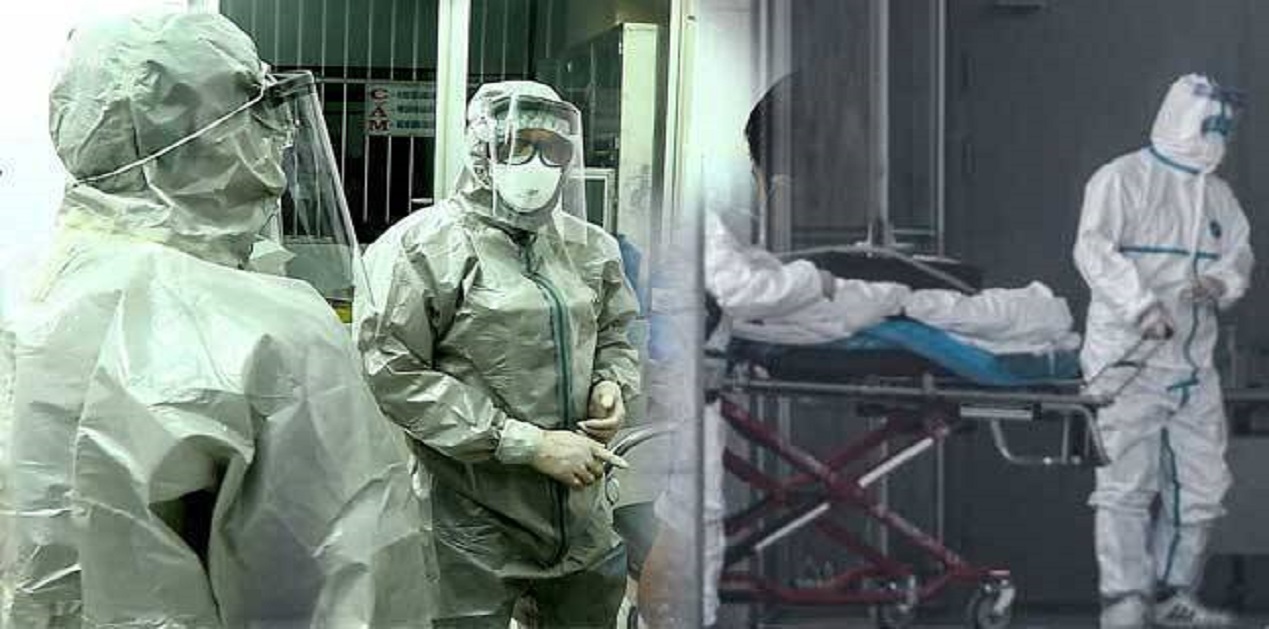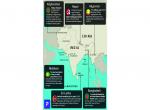The intensity and spread of Corona virus has been unprecedented in the world. All previous calamities either effected smaller regions or petered out with time. In terms of death ‘Black Death’ caused up to 75-200 million people in Eurasia and North Africa, peaking in Europe between 1347 and 1351. The Chernobyl disaster fallout area was limited to parts of Europe. Parasitic diseases like Malaria, Filariasis, Small Pox, Mad Cow disease, Chikungunya etc have longer incubation periods and were combated within reasonable time spans. Till 2018, a total of 37.9 million deaths were attributed to HIV. But that was reached over so many years!
In contrast, Corona engulfed almost the entire world almost simultaneously in a short span of three months. Despite exponential developments in medicine and computing, research establishments and pharma companies have not found its antidote till date.
The time lines and implications of Corona make an interesting study. Initially, the Corona event was categorized as launching of an undeclared biological war. All wars have temporal, social, economic and political effects that relate to certain regions or aspects. Corona is not an exception.
The world saw isolated incidents of myopic assertions aggravating the situation. Unfortunate examples being religious congregations, individual acts to spread the virus (Australia, USA and India).
Corona’s spread, containment and reporting has fluid and dynamic characteristics with changes happening faster than before. This discussion is based on open source inputs till 15 April and avoids various conspiracy theories associated with the outbreak.
Initial Reactions
At the time of the initial Wuhan outbreak, the reactions centered on incredulity - ‘Look at them!’ and later ‘Why did China wait so long to admit?’ International support was not offered immediately. Charges of deliberate downplaying by China of the December outbreak till 17 January were countered by China blaming US naval personnel of having introduced it during the naval exercises.
Proliferation and Denial
The initial reports from China, did not allow proper reflection on the magnitude and possibility of a simultaneous global spread. Complacency and rejection played their part - ‘it cannot happen here’. Only when WHO categorized the outbreak, as a pandemic, were shortcomings of disaster management planning and preparations - exposed world over! Factors like - Unproven theories about “crowd immunity”, Lack of understanding the various dimensions; Delay in initiating pragmatic workable solutions; Shortages of necessary wherewithal like respirators, Personal Protective equipment (PPE) including masks for those dealing directly with infected cases or for the masses prevented gaining of proper traction.
Not enforcing timely and strict measures like social distancing, screening of possible carriers etc resulted in many deaths in USA, UK and Italy, before effective containment and combat measure were implemented. Emergent measures like converting stadia, theatres and open spaces into temporary hospitals followed.
On the other hand, India with its twin handicaps of limited infrastructure and enormous population, ab initio, imposed nationwide lockouts and social distancing. This yielded dividends despite allegations that low numbers have direct linkage to non availability of proper testing kits. (Various India specific violations and shortcomings are discussed separately).
Economic
The implications and effects on global economy have been discussed by many and detailed discussion is excluded here. Briefly recounting - Globally, stock markets tumbled, bank rates reduced, auto sales showed decline, industrial output and transportation lie frozen. Workforce availability and corporate travel has reduced due to movement restrictions. Work from home increased. Bullion has regained its charm. Customers in developed countries temporarily faced empty shelves. Prices of some commodities shot up requiring government intervention to arrest the spikes.
Indications of US intensifying the Trade War are surfacing. Selective leaks from US (and its allies) and counter claims by China reciprocally attribute economic slump to the adversary.
China is capitalizing on its inventory stocks by demanding higher prices. Additionally, the equipment acquired by Italy fell woefully short on quality standards; this further eroded China’s international standing.
Japan’s pulling out its investments from China is significant. Similar developments are likely.
Implications
Short Term
World largely is looking at China with wariness and caution. Reports indicate a lesser reliance on China based businesses. Nevertheless, China continues to exploit its position of a major global production centre and warehouse. At the peak of Wuhan crisis, in January 2020 it bought masks and other protective clothing stocks in bulk from Australia and other nations. However, later when these very nations wanted supplies of the same, China demanded higher prices. The relocation and setting up of manufacturing units away from China requires finite time. It is debatable if nations withdrawing their investments will reinvest in their own land. Chances are that this will happen in a third country. Till the time the nations that get to establish new business, dependence on China will remain.
The financial markets have slid. Some temporary reversals are happening although restoring the status quo ante will likely take around two years. Companies where feasible have allowed employees to ‘work from home’. While governments have suggested no pay cuts, commercial establishments would secure their own bottom lines. Percentage cuts in staffing and salaries are likely which may continue for at least one year. Consequently, employees will be more inclined to save some and their ‘investment appetite’, reduce. This does not bode well for the stock markets.
Buying patterns will, of necessity, reshape to a mix of offline and online buying. Same would apply to Banking activity. Individual and corporate credits will be advanced but on stringent terms.
Mid Term
Chinese banks financed their companies to establish businesses abroad. Once embedded, these availed opportunities for expansion and bought into local markets. This trend would continue for some more time. Capital infusion is likely to be problematic. Existing strategies to generate funds and fixing of lending rates would be tweaked afresh and more stringent measures adopted.
Long distance travel and hauls have declined due to countries imposing restrictions on travel. Virtual presence may partially replace corporate travel in future. The operating principles of logistics supplies - that were geared to ensure smooth flows with an occasional interruption - will require major recalibration and alternatives for traditional warehousing and distribution methodologies would be sought. Countries will have to be prepared for repeats of outbreak as the virus has returned to China.
Long Term
The relocation outside the parent country discussed above will follow the normal course of negotiations and due diligence processes albeit at compressed scales. Here, the recently identified threat of China’s ‘debt diplomacy’ will influence decisions causing early ironing out and forming multiple new bilateral or international relationships for cooperation.
The new work environment will see increased automation, computerization, artificial intelligence (AI) and global networked operations. The workforce of new partner nations would need to learn and develop related skills, although this can be telescoped into the time frame of crystallizing the new equations. Final outcomes will likely emerge after more than two years.
The world commercial sentiment is seen wearing away from China. Alternate centers like Malaysia, Korea, India and junior players e.g. Bangladesh, Sri Lanka and some third world nations are likely to benefit.
Some BRI nations becoming preferred partners would not be farfetched. A point to remember is BRI nations have Chinese loans/aid to service. In order to qualify for the BRI aid, they have also offered long term concessions to China including ports facilities, use of natural resources; allowed presence of Chinese managers and companies ‘on site’. Thus, the volume of ‘actual’ benefits to these nations is indeterminable.
The US China Trade War will see a fresh direction irrespective of Trump’s election results. World over, new norms will be set for administrative & logistics, local governance, social, economic, geopolitical calculi will be recast to deal with incidents of such magnitude.
The Indian Context
Challenges and Violations
Being an unprecedented event, India experienced the same tribulations - at par with the world, although at a higher scale because of many factors. India’s initiative of imposing restrictions has paid dividends and drawn admiration. While the limited resources and infrastructure imposed unique inherent disadvantages. Yet the government’s first priority remained to deal with and control the epidemic.
This was aggravated by short sighted local political maneuverings; presence of a segment of population opposed to any central directives or unwilling to see implications beyond their limited, immediate comprehensions. Examples are - the triggering of en masse migration of labour to their villages ignoring official announcements and attending threat of aggravation; actions done by segments of certain religious congregations that generally are absent in their own living spaces in daily life! Incidents of violations of social distancing, stoning and physical attacks on those engaged in law enforcement and medical facilities suggest a coordinated plan to create additional issues for the state machinery.
These vested interests and myopic machinations created a Catch 22 situation wherein - strict containing action would be termed repression; mild will be criticized and no action equated with inability to control these developments or plain capsizing.
Any laws or methodologies to deal with these activities will perforce be outside the immediate time frame and thus irrelevant to the virus outbreak.
The Social Media (SM) performed dual role of disseminating official policies and spreading disinformation (more of the latter). Paradoxically the population saw advantages but after the disinformation played out. Funds for the disinformation did not appear to be any constraint; so also for Bank of China acquiring many HDFC shares. Policies regarding partial banning SM content and checking inflows of foreign funds will require deeper deliberations.
On another note the pollution of Indian skies and water systems cleared up! But it is doubtful if this will remain given the penchant and insensitivity of our population.
Measures Initiated
As is wont to happen under such grave circumstances, the government issued periodic directives. Situational changes like mass convergence of segments with aim to strain and test government initiatives exposed lacunae in pre planning. It led to quick amendments which resulted in confusion at functional levels.
The initial assurances given by the authorities were diluted subsequently. Examples - state governments appealed to Gurudwara and local sentiments to operate free kitchens rather than discharging this responsibility themselves. Amending the directive to employers to pay their employees without making any deductions to ‘pay on humanitarian grounds’ is another. The Apex court too initially ruled against levying charges on anyone for testing the virus. This was soon amended and made applicable only to those who qualify for free medical treatment.
Traditional harvesting dates in regions where ripe crops stood had to be postponed due to non availability of labour and movement restrictions. This brought dismal predictions over depletion of stocks after six months and relaxation was made to facilitate timely harvesting.
On one hand, private bodies developed and deployed low cost sanitizing solutions and mobile testing labs. Provisioning of medical supplies and testing kits was done amidst allegations of unpreparedness. Yet arrangements, including imports, were made to deal with the situation. The conversion of railway bogies into mobile hospital trains was a good move and boosted the beds holding capacities of hospitals. Shortage of protective clothing surfaced and needs to be looked into.
The Future
India having gone through this experience would have to be better prepared in future to deal with similar emergent situations. A detailed unbiased review of disaster management and creating related plans is required although making huge investments would not be advisable.
The armed forces in any case are inducted to deal with such situations as they have more experience of dealing with frequent and drastic changes in operating environments. So why not give them a formal representation in committees generating disaster policies and responses rather than requisitioning their help when crisis appear.
Lastly, the supremacy of country’s interests has to be acknowledged and petty political interests sacrificed.
(The paper is the author’s individual scholastic articulation. The author certifies that the article/paper is original in content, unpublished and it has not been submitted for publication/web upload elsewhere, and that the facts and figures quoted are duly referenced, as needed, and are believed to be correct). (The paper does not necessarily represent the organisational stance... More >>
Image Source: https://keralakaumudi.com/en/news/news.php?id=233326











Post new comment